Stronghold Rescue & Relief: Applying Special Ops Principles to Protect Families in Conflict Zones
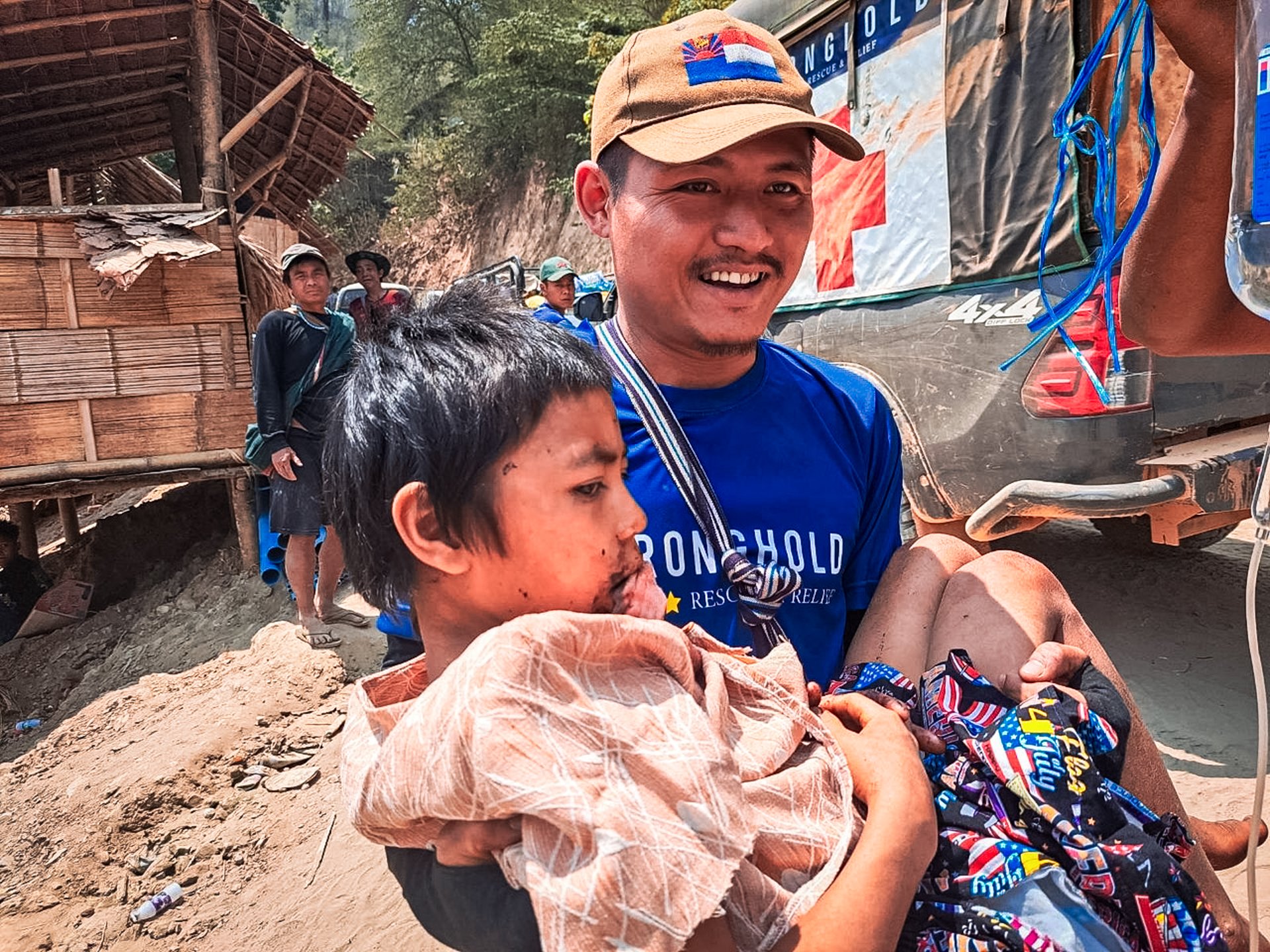
A Stronghold Rescue & Relief ambulance crew member carries a wounded boy shot in the mouth. Karen State, Burma, 2023. Photo courtesy of Stronghold Rescue & Relief.
I’m going to tell you two stories. Both events happened just a couple of months ago in a remote part of Burma.
The first event happened around 8 p.m. on Wednesday, May 10, 2023, when a group of Burma Army soldiers entered a remote village in East Burma. Screams of alarm and terror swept through the village like wildfire as families grabbed whatever they could carry — and any family members they could find — and ran for their lives into the darkness of the night.
However, 17 people — including 8 children under age 10 — were not able to escape. The Burma Army soldiers captured them and began to commit unspeakable atrocities against these defenseless captives until finally slaughtering them all. The Burma Army soldiers threw the corpses of the villagers into a pile and set it on fire.
The next morning, local village defenders retook the village and discovered the charred remains.
That morning, I was just a few miles away assisting in another sector when I heard the news and was sent the horrific images.

Villagers and village defenders work together to load a severely wounded patient into a Stronghold Rescue & Relief ambulance in Karen State, Burma, March 2023. Photo courtesy of Stronghold Rescue & Relief.
The second event began on the morning of Thursday, June 8, 2023, just a few miles from the location of the massacre. The Burma Army attacked several villages, looking to root out and kill any of the villagers who would dare defend themselves from the Burma Army’s tyranny.
Mortars rained down on unsuspecting civilians — killing some and wounding others — as the Burma Army assaulted the undefended villages.
However, on this day, things went differently.
Reacting quickly to the mortar barrage, the civilians knew what to do. They stopped the major bleeding of the wounded using makeshift tourniquets made from bandanas and clothes in the village, tightening them with sticks and other items until the patients were stabilized enough for immediate evacuation.
Relying on a series of strategically placed handheld radios, the fleeing villagers communicated with other nearby villages and coordinated for a safe place to run — and they took their wounded with them.
The Burma Army destroys a village in Karen State, Burma. The Burma Army soldiers fired 40mm high-explosive grenades at civilians attempting to collect their belongings before the flames engulfed their homes. Video courtesy of Stronghold Rescue & Relief.
When the battle subsided, the villagers who fled were provided rice and medicine that had been stockpiled in secure locations around the jungle.
At the outset of the battle, local village defenders moved into place to slow the enemy advance and buy enough time for their families to escape. Some of these brave young men were killed and wounded. The defenders used CAT tourniquets to stop the bleeding of the wounded and tactical field litters to quickly evacuate the patients when the defenders could no longer hold the line.
The critically wounded were taken to the bank of a large lake where a medical boat was waiting with medics, extra supplies, and advanced life support. Once on the boat, medics continued to keep the wounded alive for the better part of two hours while crossing the lake. The boat returned multiple times to ferry the dead and wounded across.
On the far bank of the lake, ambulances with more medics and advanced life support waited to receive the patients. With the patients onboard, the ambulance drove three hours to deliver the critically injured patients to safety at a remote clinic deep in the jungle.
With that, the battle was over — for a while, at least.
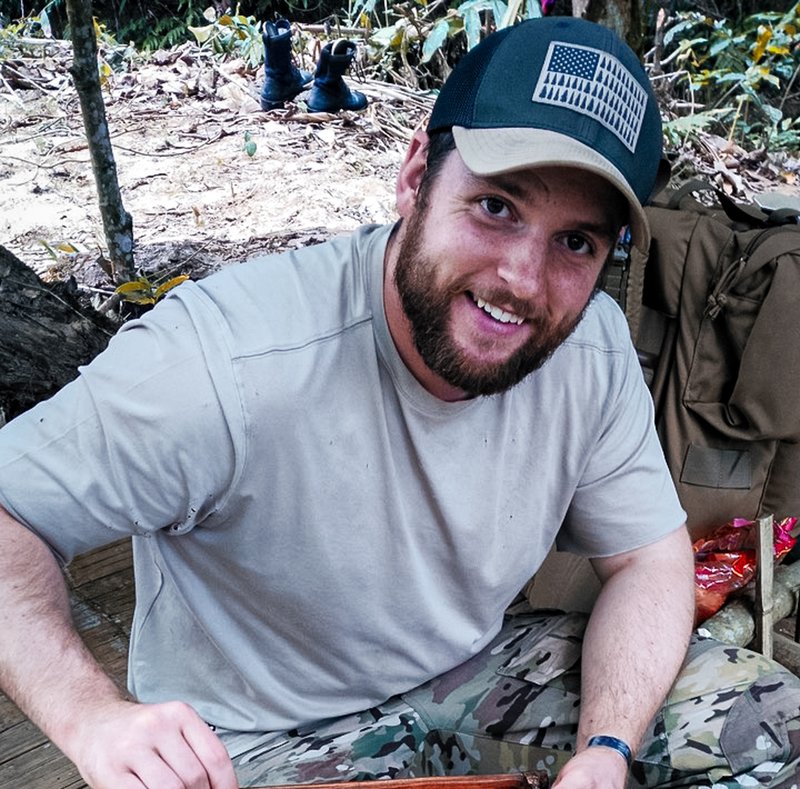
The author, a former Navy SEAL and Stronghold's founder and CEO, lives in the jungle while assisting ethnic minority families in Karen State. Photo courtesy of Stronghold Rescue & Relief.
My name is Ephraim Mattos. I'm the founder and CEO of Stronghold Rescue & Relief. We are a nonprofit NGO whose mission is to protect and care for people in conflict zones.
One location where we work is Burma.
In 2021, the Burma Army launched a coup that abolished the small steps Burma had been taking toward establishing democracy. Since the coup, the entire country has been in a state of civil war, with multiple ethnic groups defending themselves against a progressively violent and erratic Burma Army desperate to maintain its vice grip of control.
Both of the attacks I’ve written about are true events. Both events happened within a few weeks of each other and just a few miles apart.
So why were the outcomes of the two events so different? Why did one Burma Army attack result in a massacre while the other attack resulted in a coordinated mass evacuation and rapid emergency medical response?
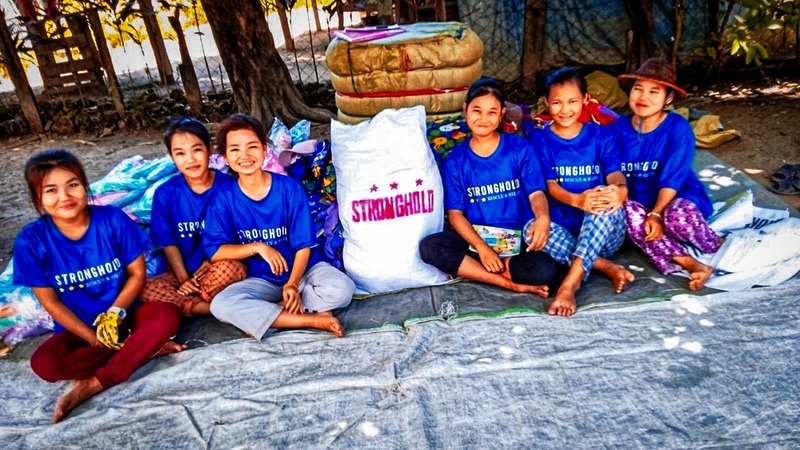
Local teams distribute aid that was provided and organized by Stronghold Rescue & Relief to families suffering from Burma Army attacks. Karen State, Burma, 2023. Photo courtesy of Stronghold Rescue & Relief.
This is why: A small team of Stronghold Rescue & Relief operators had been living and working for months in the sector with the coordinated response. They spent countless hours training, supplying, and organizing the locals. The Stronghold team set up ambulances, trained crew, and mentored local tribal leaders to make sure they would be able to manage everything at the critical moment.
All the work paid off — and saved lives.
On May 11, 2023, 17 villagers of Nya Bin Tha village, Karen State, Burma, were massacred and burned by the Burma Army. Eight of the victims were children under age 10. Video courtesy of Stronghold Rescue & Relief.
The medical boat — which evacuated the most critically wounded and provided immediate medical resupply — was Stronghold’s boat ambulance.
The truck ambulances waiting on the far bank of the lake to meet the medical boat were Stronghold ambulances and crews.
The food distributed to the now-homeless villagers was all provided, pre-positioned, and organized by Stronghold.
When I founded Stronghold Rescue & Relief in 2017, after leaving the SEAL Teams, I based my organization’s methods around some of the same core principles I learned in special operations, particularly that of “teaching a man to fish” — and also giving him a fishing rod.
At Stronghold Rescue & Relief, we send small teams — no more than four people — into conflict zones to establish humanitarian operations and organize, train, supply, and mentor the locals as they run their own show. This is roughly based on the Advise, Assist, and Accompany (AAA) method that many veterans are familiar with.
I call the method we use at Stronghold “Charity With Dignity,” and here’s why it works so well.
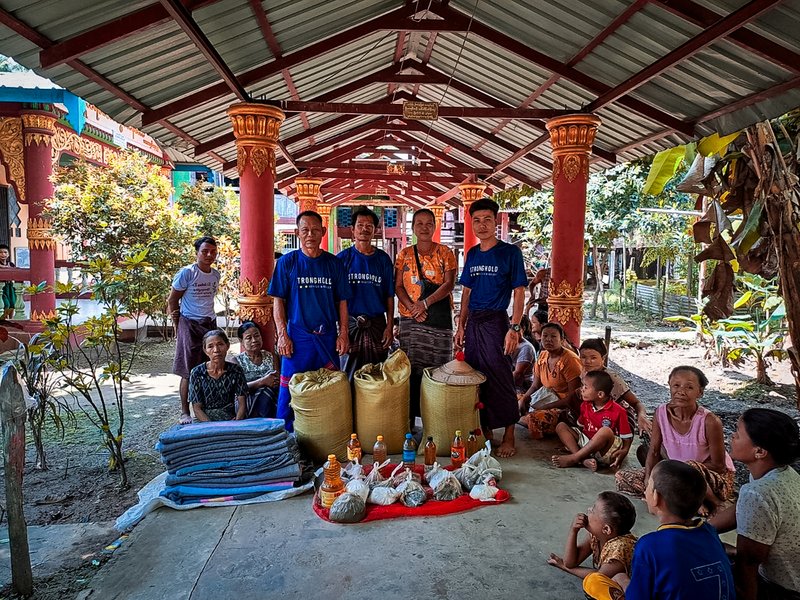
Local teams distribute aid that was provided and organized by Stronghold Rescue & Relief to families suffering from Burma Army attacks. Karen State, Burma, 2023. Photo courtesy of Stronghold Rescue & Relief.
Cost-Effectiveness
It typically costs thousands of dollars to transport, house, supply, and feed each foreigner who wants to volunteer in an area that needs help. By keeping our teams small and composed of primarily special operations veterans, each team member is able to be their own logistics specialist, medic, driver, personal security, etc. We save a lot of funding — and lives — by operating this way.
Reaction Time
Communities and villages that are under attack are able to react faster to an emergency situation than a team of foreigners because, quite frankly, the villagers are already at the scene of the emergency. It’s like having a fire extinguisher in your house instead of having to rely solely on the fire department. By organizing, supporting, mentoring, and supplying the very people who are under threat of attack, and by living and working with them in the very locations where those attacks occur, emergency response time can be cut to virtually zero.
Work Efficiency
Stronghold’s small, highly efficient teams are able to live with and organize teams of locals who can do the same exact work that a foreign volunteer would do — but better. The locals understand how things work in their homelands, they speak the language, they know whom to trust and whom not to, they know the culture, and they are often ready and willing to work and serve their people — if just given the opportunity.

Villagers and village defenders who received medical training and supplies from Stronghold Rescue & Relief treat the wounded in the Karen State of Burma, June 8, 2023. Photo courtesy of Stronghold Rescue & Relief.
ROI
Enabling the locals to be independent means that Stronghold’s investment of time and equipment — all provided by Stronghold’s supporters — will continue to pay dividends well into the future. What happens when the foreigners leave? What happens when we pack up our medical kits and radios and get in our trucks and drive away and get on flights back to the US? If we didn’t leave behind skills and equipment and a management blueprint so the people can help themselves in times of trouble, our mission would fail. They must be able to stand on their own.
Dignity
Imagine for a moment that your neighborhood was just attacked, your wife was murdered, your kids are missing, your house was burned to the ground, and now you’re running for your life in the jungle — starving, grieving, terrified, and angry. Now imagine finally reaching a haven of safety in the jungle that provides blankets, food, and communication. The last thing you would want is for a stranger from a foreign country to come running up to you, give you a bowl of rice, and then proceed to take a selfie with you for Instagram or sit with you in some awkward display of forced empathy. You would, of course, be grateful for their kindness — but you would also be humiliated. At Stronghold Rescue & Relief, we do our best to avoid this entirely. If at all possible, virtually all of our face-to-face humanitarian relief operations are administered by locals for locals. We provide the funding and coordinate everything behind the scenes, but when a refugee is having the worst day of their life and needs help, it is a member of their own tribe who helps them, gives them food, and comforts them.
This is “Charity With Dignity.”
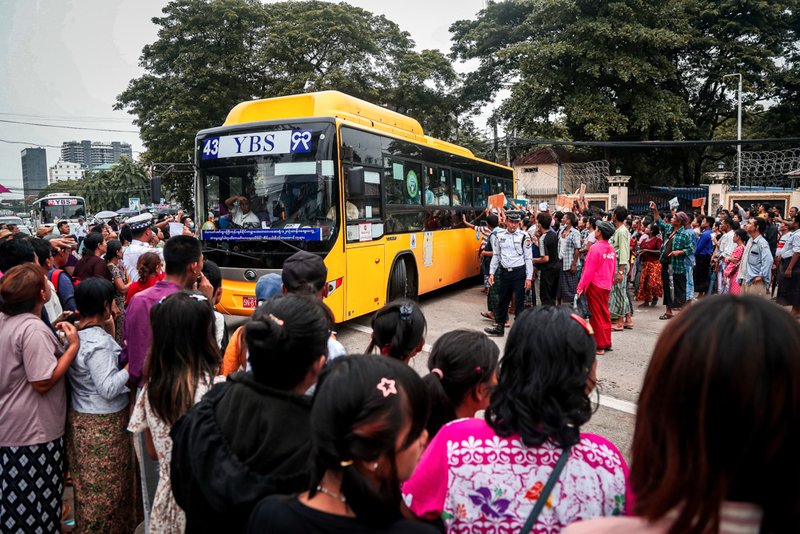
A bus carrying released prisoners is welcomed by family members and colleagues as it leaves Insein Prison in Yangon, Myanmar, Tuesday, Aug. 1, 2023. Senior Gen. Min Aung Hlaing pardoned more than 7,000 prisoners and commuted the death sentences of others to commemorate the day the Buddha gave his first sermon, the MRTV report said. AP photo by Thein Zaw.
At Stronghold Rescue & Relief, our motto is, “The only thing necessary for the triumph of evil is for good men to do nothing.” Our team members live — and sometimes die — by these words. This quote is emblazoned on the back of the T-shirts we send to each of our monthly supporters.
I chose this quote to be Stronghold’s motto because it speaks to the very nature of evil: It implies evil is an ever-present force always on the move. It is constantly gathering strength and planning and looking for its next victim.
But this quote also speaks so well to the cure for evil: Good men must act. Good men must also be on the move. Good men must also gather strength and plan and seek out the defenseless in order to protect them.
Stronghold Rescue & Relief was able to preemptively seek out and save the lives of many people in the village with a coordinated response to the Burma Army attack.
However, many more villages in Burma need help. There are many more evil days ahead. The Burma Army will continue to attack and bomb, rape and burn — and there will be more wounded and starving and dying.
So we will continue to mentor and work and serve the people of Burma, standing with them in the worst of times so that one day they can stand on their own.
Read Next: Claymore Mines: 60-Plus Years of Fronting Toward the Enemy

Ephraim Mattos is a US Navy SEAL veteran and the CEO of Stronghold Rescue & Relief.
BRCC and Bad Moon Print Press team up for an exclusive, limited-edition T-shirt design!
BRCC partners with Team Room Design for an exclusive T-shirt release!
Thirty Seconds Out has partnered with BRCC for an exclusive shirt design invoking the God of Winter.
Lucas O'Hara of Grizzly Forge has teamed up with BRCC for a badass, exclusive Shirt Club T-shirt design featuring his most popular knife and tiomahawk.
Coffee or Die sits down with one of the graphic designers behind Black Rifle Coffee's signature look and vibe.
Biden will award the Medal of Honor to a Vietnam War Army helicopter pilot who risked his life to save a reconnaissance team from almost certain death.
Ever wonder how much Jack Mandaville would f*ck sh*t up if he went back in time? The American Revolution didn't even see him coming.
A nearly 200-year-old West Point time capsule that at first appeared to yield little more than dust contains hidden treasure, the US Military Academy said.












